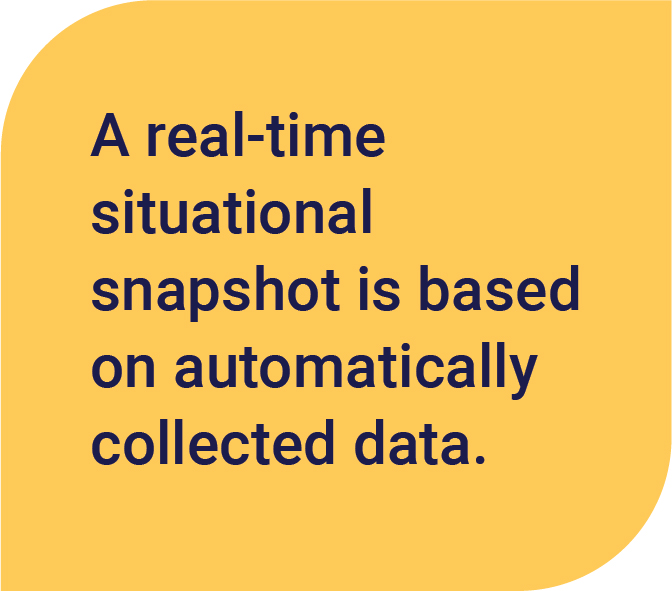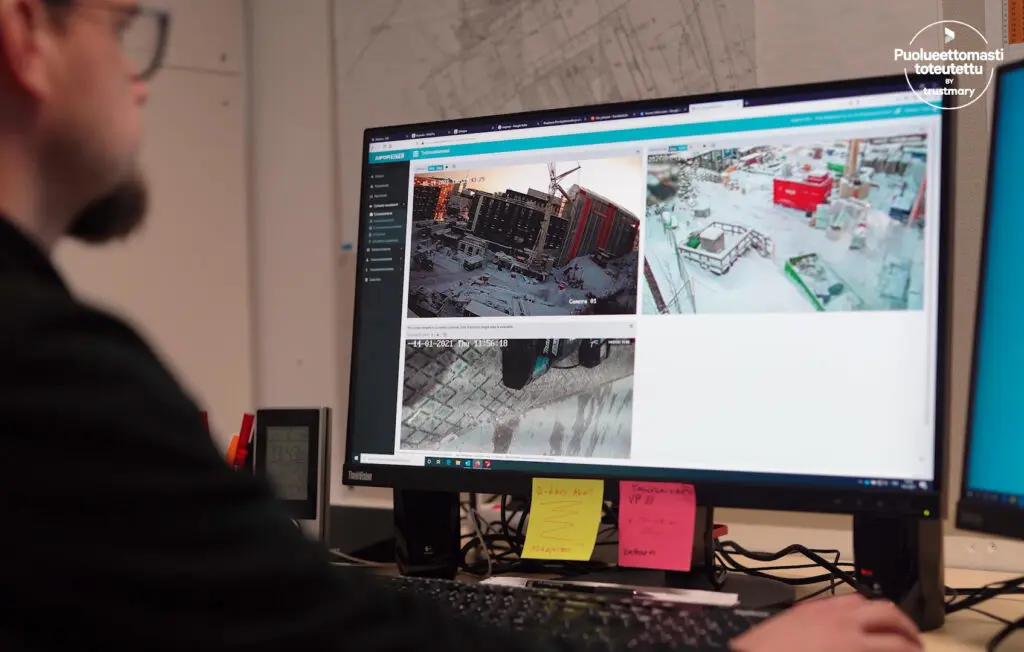An accurate situational snapshot is key. There are always surprises during a construction project, and the site manager has to solve problems on the fly. Finding the right solution requires the foreman to have an up-to-date snapshot of the situation.
However, there are snapshots and real-time situational snapshots. The keyword here is automated data collection to support decision-making.
The most common method of data collection is manual and incomplete
In addition to direct communication with people on the site, the most common way to gather information about the situation has been manually entering observations in various systems. Before, information was documented primarily in Word or Excel forms. Today different reporting software platforms are available for construction sites.
The disadvantage of these reporting platforms is that they do not provide a real-time and fully reliable picture of the project’s progress. Entries are usually made alongside other work, and in addition, manual entries involve the risk of human error. A truly real-time and reliable situational snapshot is only available with automatic data collection.

How can you get a real-time situational snapshot?
If the site managers rely only on their observations and the contractors’ reporting, the problems may remain unseen. The real-time snapshot is backed with automatically-collected data, giving site management waterproof facts about what is going on.
In addition, by utilising Aiforsite’s real-time productivity analytics, for example, management can delve deeper into the root causes of deviations and address them immediately.
What does automated data collection mean?
Semi-automated data collection
360 and drone video shooting
For the time being, semi-automated methods require human labour as part of the process. For example, capturing 360 videos requires a person who regularly walks around the site with the camera following a defined route. Drone imaging requires a trained and certified operator and can also be included in the same category.
Some big construction companies have tested robots like Spot the dog for on-site data collection. However, the widespread use of robots still needs more development.
Even shot by humans, the captured 360 video material gives such visibility to work progress in different work areas that it already forms a near real-time snapshot.
Positioning data
Another semi-automated data collection method is the indoor positioning system. To work correctly, it requires the installation of a sensor network in a desired area on the job site and workers to use tracking devices attached to their helmets. The system makes it possible to monitor work progress in the work area and compare the situation to the planned schedule.
Fully automated data collection
Construction site cameras
Site cameras represent a fully automated data collection method. For example, at Aiforsite, we use fixed robotic cameras outdoors and portable cameras in the construction workspace areas indoors.
The robotic camera can zoom in on the image with an accuracy of five centimetres and allows site monitoring in real-time remotely, even from the other side of the globe.
Similarly, the workspace camera streams the image in real time. The site manager does not need to walk to the site every time because he can check the situation remotely regardless of where he is physically at the moment.
Condition monitoring
Condition monitoring is another automated way of collecting data. Once installed, the sensors transmit condition information automatically. The sensors can measure the mould demolition strength of concrete casting or the humidity and temperature of indoor air. The right conditions are one of the most critical prerequisites for starting the next work phase.
How does real-time awareness help you stay on schedule?
Real-time awareness reduces the number of wrong assumptions and ensures that the project runs on schedule. The site management will have all the necessary information to coordinate work steps and material flows.
Construction projects are extensive logistical entities. The work phases must take place in the correct order, and the required materials, as well as the installers, must be present at the right time. However, the situation on the site is changing rapidly, so the original plans are not always feasible.
“Traditionally, the primary solution for keeping up with the project schedule has been the experience and expertise of the site managers. If the most important skill of the site manager is the ability to put out fires quickly, it will not improve the flow of information on the site in general. A real-time awareness makes reaction to changes and day-to-day management easier. ”
Kari Hirvijärvi, CEO, Aiforsite Oy
Without real-time situational awareness, management will not detect all possible deviations and changes in time. As a result, managers spend all their time resolving urgent problems on the fly. When this happens often enough, completing the project on schedule is uncertain.
Why should data collection be automated?
Automating data collection is vital for two reasons:
- Collecting data manually takes a lot of time, and the snapshot is not real-time, as entries are made when the time is right. Thanks to automatic data collection, the situation is truly real-time, and the site can focus on utilising data and improving productivity.
- Manual entries are prone to flaws and human error. People may enter records differently, and that causes alterations in the data. Only automatically-collected data is real-time, accurate and consistent.
What digital tools do you need for real-time awareness?
The answer depends on how widely you want to get a real-time picture of the entire construction project or only some specific work phase or area. You may need only a few tools for the latter. For the full project visibility, you need virtually all of the following:
- Construction site cameras, workspace cameras, 360 ° cameras and possibly also drone images to get a visual and documented snapshot of the progress of the project
- A positioning information system for tracking and improving the productivity of work.
- Condition meters to measure, for example, the moisture values of concrete pouring.
Creating an overall real-time awareness of a construction project takes a lot but gives even more.
- Reduce the workload of work management
- Ensure the completion of the construction project on schedule.
- Improve the quality of construction.
- Improve safety on the job site.
- Accumulate data that allows you to utilise advanced analytics, such as artificial intelligence, in the following construction projects.
This article is part of the publication series “Three steps towards more productive construction site”.
Next read: Why is it important to consider digital tools in pre-construction planning?”
